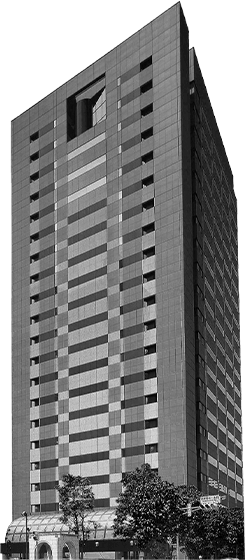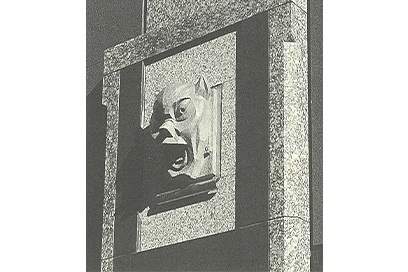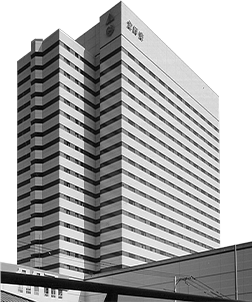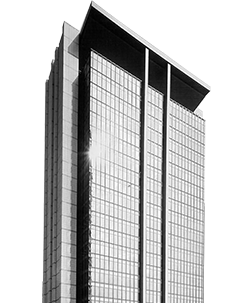 06
1989
06
1989
Tokyo
The Hibiya Daibiru Buildings
A Highly Challenging Project to Rebuild Actively Used Buildings
Failure Not Allowed
Phase I of the Hibiya Daibiru Building rebuilding project began in April 1986, and extraordinary difficulties had to be overcome by the time construction was completed in October 1989. One was that the ground in that area was soft, requiring the builder to exercise great care during foundation work. High-durability columns 850 mm in diameter—the largest possible—were used for bracing despite the high expense, and a type of heavy equipment known as a rock auger was used to drill out the pine piles from the foundation concrete, leaving the old foundation in place. As a result, construction was able to proceed with high level of safety and precision right until completion without impacting surrounding buildings and roads.
While this was going on, something happened to remind the company of the historical value of the former Hibiya Daibiru Buildings. The former Hibiya Daibiru Buildings, designed by Setsu Watanabe, were highly artistic edifices. Building No. 1 used Romanesque styling, and Building No. 2 used Gothic Art Deco styling, which were both based on Medieval European styles. Mounted on the exterior walls as talismans were 127 ceramic heads of seven different creatures, including lions, gargoyles, and pigs. Furthermore, a bronze goddess statue and hero statue by Teizo Okuni were positioned by the left and right walls at entrance to Building No. 1. Architectural historians regarded the buildings as “an ambitious experiment unlike any other,” so when news of their impending demolition was reported, people from all over Japan asked if it would be possible to at least save the walls with the animal heads. Due to these requests, the gargoyle, pig, and lion heads were removed before demolition and were eventually reused for the new Hibiya Daibiru Building. The bronze goddess statue and hero statue from the first-floor entrance were also put back on display as before.
Phase I of construction took place right in the middle of the bubble economy while there was a surge in building construction in Tokyo. Shortages of materials and labor were so severe that the builder struggled to secure them, and it looked as though construction might fall behind schedule. However, thanks to the hard work of everyone involved, phase I was completed as originally planned, and the building was able to open with a completion ceremony on October 4, 1989. The company was ready to proceed with phase II construction, but despite some minor delays due to concerns about the preservation of the building’s historical value, it was completed and unveiled in 1991.
The Hibiya Daibiru Building rebuilding project was thus completed. It was a project with great significance. As pointed out earlier, this was Daibiru’s first attempt to rebuild a building that was still in use. Actually, strictly speaking, it was a project that even Daibiru’s competitors had practically no experience with. Practically none of them had undergone the experience of securing a site for relocation, developing a plan, and carrying out demolition and construction at a rapid pace. For that reason, the industry took note of the project, and many of Daibiru’s competitors were watching to see how it turned out.
As the rebuilding of commercial buildings was an inevitable undertaking that was certain to become more widespread, Daibiru’s reputation was greatly enhanced by the fact that it had completed the project according to plan. In a sense, the Hibiya Daibiru Building rebuilding project was one that could not be allowed to fail, because the future success of Daibiru’s management depended on it.
-
1927 1931 Hibiya Daibiru Buildings
No. 1 and No. 2 -
2007 International Operations
-
- An Unexpected Discovery of a Good Property
- Mutual Trust and a Long-Term Perspective as Points of Agreement
- The Acquisition of a Property in Hanoi Through Unity of Philosophy
- Implementing Daibiru Quality Through Building Renovations
- Challenges in Australia, Our Second Overseas Expansion Target
- The Discovery of 275 George Street
- Difficult Contract Negotiations with JHG
- Overcoming Several Unexpected Difficulties
-




